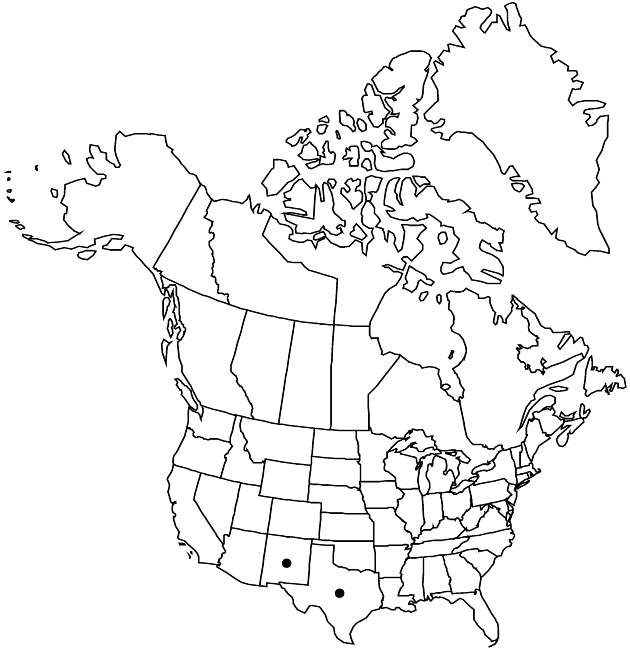Difference between revisions of "Perityle quinqueflora"
SouthW. Naturalist 4: 205. 1959.
FNA>Volume Importer |
imported>Volume Importer |
||
| (One intermediate revision by the same user not shown) | |||
| Line 8: | Line 8: | ||
}} | }} | ||
|common_names=Five-flower rock daisy | |common_names=Five-flower rock daisy | ||
| + | |special_status={{Treatment/ID/Special_status | ||
| + | |code=E | ||
| + | |label=Endemic | ||
| + | }} | ||
|basionyms={{Treatment/ID/Basionym | |basionyms={{Treatment/ID/Basionym | ||
|name=Laphamia quinqueflora | |name=Laphamia quinqueflora | ||
| Line 56: | Line 60: | ||
|publication title=SouthW. Naturalist | |publication title=SouthW. Naturalist | ||
|publication year=1959 | |publication year=1959 | ||
| − | |special status= | + | |special status=Endemic |
| − | |source xml=https:// | + | |source xml=https://bitbucket.org/aafc-mbb/fna-data-curation/src/2e0870ddd59836b60bcf96646a41e87ea5a5943a/coarse_grained_fna_xml/V19-20-21/V21_787.xml |
|tribe=Asteraceae tribe Heliantheae | |tribe=Asteraceae tribe Heliantheae | ||
|subtribe=Asteraceae (tribe Heliantheae) subtribe Peritylinae | |subtribe=Asteraceae (tribe Heliantheae) subtribe Peritylinae | ||
Latest revision as of 20:14, 5 November 2020
Plants 7–30 cm (often densely leafy); usually glabrate or puberulent, sometimes hirtellous. Leaves: petioles 5–8(–12) mm; blades reniform to cordate, 8–20(–33) × 8–20(–33) mm, margins subentire, dentate-toothed, or shallow-lobed. Heads in corymbiform arrays, 7–8(–9) × 2–3 mm. Peduncles 2–10(–15) mm. Involucres cylindric to narrowly campanulate. Phyllaries 5–6, linear-lanceolate, 5–6(–9) × (1–)1.3–1.7 mm. Disc florets 5–6(–8); corollas yellow, tubes 1–1.3 mm, throats tubular, 2–2.3(–2.8) mm, lobes 0.5–1 mm. Cypselae 1.9–2(–2.9) mm; pappi of 25–30 bristles 0.6–2.5(–3.5) mm. 2n = 34.
Phenology: Flowering spring–fall.
Habitat: Crevices of limestone (rarely igneous) rock in high canyons, bluffs, and caprock
Elevation: 1200–2500 m
Discussion
Perityle quinqueflora grows in mountains of west-central trans-Pecos Texas and adjacent New Mexico. Possibly P. quinqueflora and the similar P. rupestris var. rupestris have both evolved from a widespread common ancestor resembling P. cernua.
Selected References
None.
